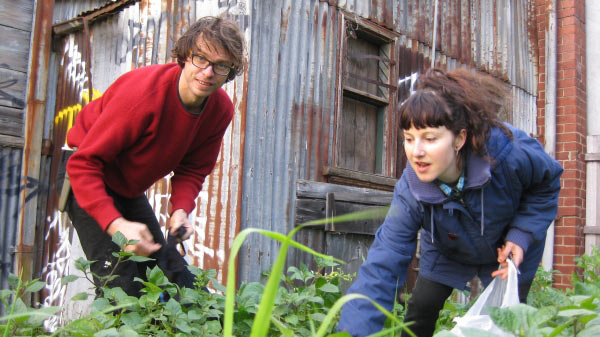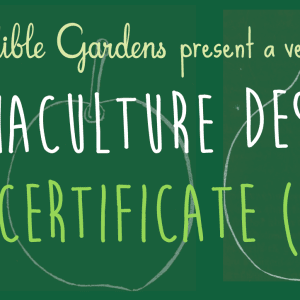Solanum lycopersicum
Family: Solanaceae
Ah the red in red-blooded, the wonderful ubiquitous tomato. How on earth did the Italians identify as true Italians before Africans gave them wheat for their pasta and the South Americans, tomato for their sauce?! Most tomatoes on the shelves in supermarkets are picked unripe and are sprayed with ethylene in storage to force ripening and as a result are less juicy and more mealy with much less sweetness and flavour, so tomatoes grown at home are far better than you can buy. Growing tomatoes at home is a must.
History
It seems that the tomato originally came from Peru and became domesticated in Mexico. In Europe it was the Spanish who first incorporated it into their cuisine and cultivation started as early as the 1540’s. The Italians only began using it as a food in their local dishes in the 17th century. By the beginning of the 18th Century many European countries and their colonies were eating tomatoes.
Varieties
There are at least hundreds but more than likely thousands of tomato cultivars (last time we checked Eden Seeds in Australia had 126 different varieties) so why don’t you try to and find some really unusual ones to win friends and influence people. Here are some we like:
- Cherokee Purple – extremely sweet flavour.
- Daydream – heavy bearer over long period does well in the hot areas.
- Grosse Lisse – the backyard champion.
- Yellow Pear – excellent flavour, heavy bearing throughout the season and good for pickling as it is acid free.
- Stupice – extremely early, it would be good to have a few of these growing from the beginning of August so you can get your tomatoes well before the end of the year
Health and Nutrition
Tomatoes are rich in vitamin C, in fact one medium sized tomato provides 40% of the recommended daily intake of vitamin C. It is also a good source of vitamin A and contains an important chemical known as lycopene which has shown evidence for reducing the risk of cancer.
Cultivation
It is best to sow tomatoes in late winter in a greenhouse or a warm micro-climate where you can be sure of frost-free conditions. We recommend growing indeterminate varieties as they need less space and can be staked and trained upwards. Don’t over-stack tomatoes as it will inhibit their growth, encourage disease and reduce total yield. Space them at least 35cm apart. We recommend planting basil close to the tomatoes once they are about 20-30cm tall as they are a companion plant and wont cast shade on your staked or wired tomatoes. Tomatoes don’t take well to over-watering when young but once the plants begin to get flowers the soil should not be allowed to dry out as they will more than like likely suffer from blossom end rot, so make sure you have a good mulch. Also you will have less chance of fungal disease with a REG bed because our in-ground irrigation means the leaves don’t get wet all the time. Don’t over water though or your fruit will split on the vine.
Support and Training
Indeterminate varieties will need support through using any of many systems. You can use string or wire tied between poles at predetermined heights and then as the plants grow you can thread them between the wires. More commonly, gardeners will drive stakes in the ground (careful with the wicking beds!) and tie the tomatoes as they grow up. This makes cutting off the side shoots easy (keep for transplanting) and gets a good amount of air around the plants. Prune to a single or double stemmed vine. Your tomato plants are capable of producing up to 4 kilos each so good training and care is well rewarded.
Fertiliser
Tomato plants should not be given the same level of nitrogen feeding as the leafy greens so save your fish fertilizer for them. They will enjoy soil that has just grown legumes like peas or beans so they follow on well from your broad beans. They do, however like a good amount of phosphorous though to stimulate fruit development, so before anything make sure you have attempted to get your soil biology up, lots of worms is always a good sign and bring on the worm juice and seaweed emulsion (make sure to dilute 10ml to at least 2 litres for the seaweed and the worm juice should be about 1 cup to a litre of water.
Pests and diseases
Remember if you have trouble working out what is attacking your plants you can go to the amazing government website on pest and disease identification http://www.padil.gov.au/ .
Storage
Supermarket tomatoes are grown for their hard skin to resist bruising. Well there are other characteristics we can grow tomatoes for and some varieties can sit on your kitchen bench in a ripe condition and not go off for nearly 3 months! Of course there is always bottling too.
Trivia
There is a tomato plant in Florida that has produced 32,000 tomatoes the size of golf balls weighing in at 522.4 kilos all from the single plant! Now come on home gardeners there is a real challenge for you!
Quotes
“It’s difficult to think anything but pleasant thoughts while eating a homegrown tomato” Lewis Grizzard



